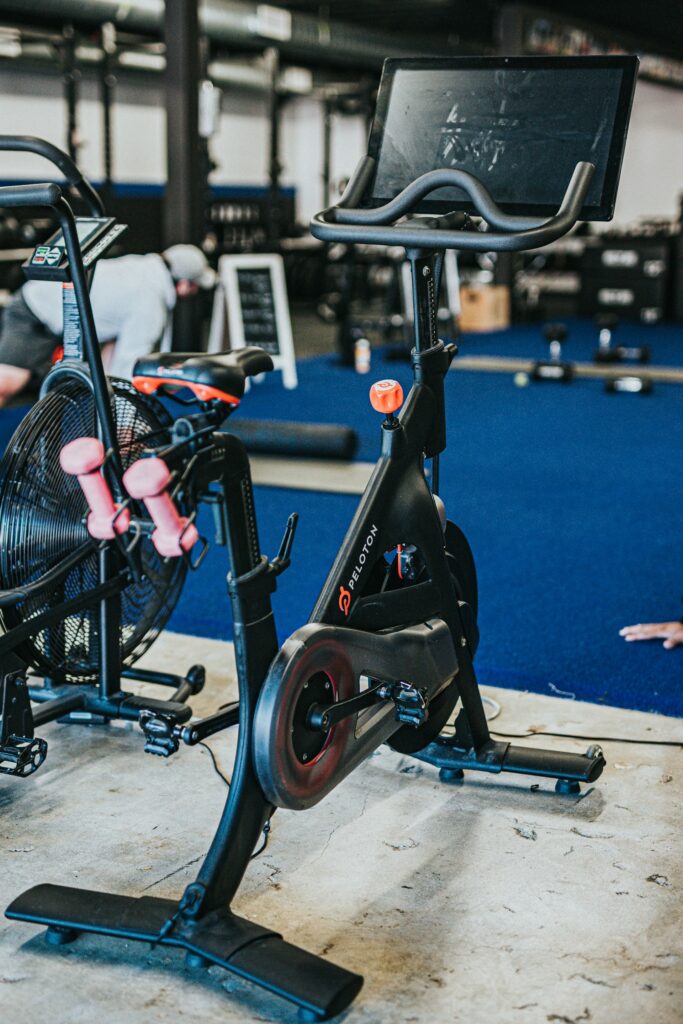If you’re shopping for a spin bike in 2025, you’ve probably seen two main types of resistance systems: magnetic and friction. And if you’re confused about which is better, you’re not alone.
Both types can give you a solid indoor cycling workout—but there are huge differences in noise level, maintenance, durability, and overall feel.
This guide will break it all down in simple terms so you know which resistance system is right for your home workouts, your fitness level, and your budget.

What Is Resistance in a Spin Bike?
Resistance is what makes pedaling harder or easier—just like shifting gears on a real bike. It’s how you simulate hills, increase intensity, and challenge your legs during indoor cycling.
Every spin bike uses one of two systems to create that resistance:
- Friction resistance uses brake pads that press against the flywheel.
- Magnetic resistance uses magnets to create tension without contact.
Let’s explore how each one works—and which one suits your needs in 2025.
What Is a Friction Resistance Spin Bike?
Friction resistance bikes work like a traditional brake system. When you turn the resistance knob, a felt or leather pad presses against the flywheel to increase tension. The harder the pad presses, the more resistance you feel.
✅ Pros of Friction Resistance
- Lower price: These bikes tend to be more affordable.
- Simple mechanics: No electronics or magnets—just a brake pad and flywheel.
- Unlimited resistance: You can crank the resistance as high as you want.
❌ Cons of Friction Resistance
- Noisy: The contact creates a rubbing sound that can be distracting.
- High maintenance: Pads wear down and need replacing regularly.
- Less smooth: Resistance can feel inconsistent or “gritty” at higher levels.
- Less accurate: You can’t always tell exactly how much resistance you’ve applied.
What Is a Magnetic Resistance Spin Bike?
Magnetic resistance bikes use two strong magnets that move closer or further from the flywheel to increase resistance. There’s no physical contact—just a magnetic field slowing the wheel.
This system is now standard in most mid-to-high-end bikes in 2025, and it’s quickly becoming the go-to for serious riders and home fitness fans.
✅ Pros of Magnetic Resistance
- Ultra quiet: No contact = whisper-quiet rides (great for shared spaces).
- Smooth and consistent: Feels fluid, especially when sprinting or climbing.
- Low maintenance: No pads to replace or parts to wear down.
- Digital precision: Many magnetic bikes show exact resistance levels.
- Modern features: Most smart and app-connected bikes use magnetic resistance.
❌ Cons of Magnetic Resistance
Heavier flywheels: To simulate road feel, many require a heavier flywheel.
Higher cost: Usually more expensive than friction bikes.
Fixed resistance levels: Some models may have capped max resistance.
Who Should Choose a Magnetic Resistance Bike?
If you want a quiet, low-maintenance, modern indoor cycling experience, magnetic resistance is the way to go—especially in 2025 when more options are available than ever before.
It’s ideal if you:
- Live in an apartment or shared home
- Work out early or late
- Use fitness apps like Peloton, Zwift, or iFit
- Want a smooth, studio-like ride
- Prefer smart features and digital resistance control
It’s a bigger upfront investment, but it pays off long-term with durability and ease of use.
Final Verdict: Magnetic Wins for Most Riders in 2025
Friction bikes had their time—but in 2025, magnetic resistance is dominating the spin bike market for good reason. It’s quiet, smooth, and virtually maintenance-free.
If you’re serious about spinning at home, want to connect to apps, and care about longevity, go with magnetic. You’ll pay a bit more upfront, but enjoy a far better and longer-lasting experience.
That said, if your budget is tight or you’re just starting out and want to test the waters, a decent friction bike can still do the job—just manage your expectations and be prepared to tinker with the pads now and then.
Leave a Reply